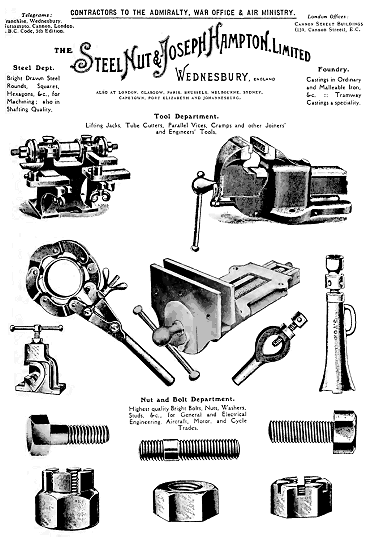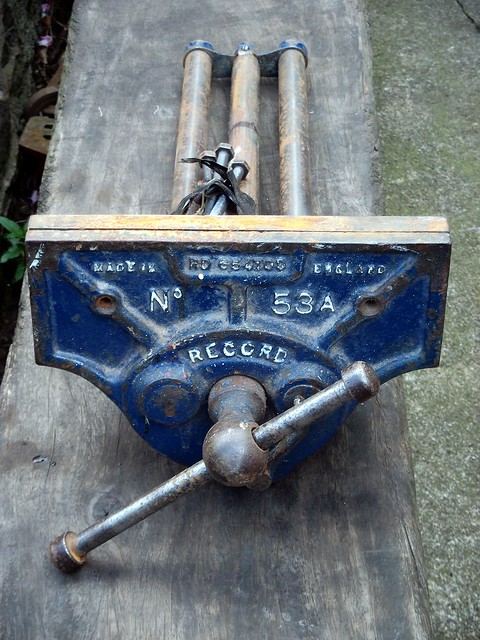in November 1932 Record applied for another vice patent, this time for a "sawduster excluder plate"
This innovation was so mysterious that they put a sticker on the said plates to explain what they were for:
some of the plates were engraved with the patent number (just about visible in the example above).
You may well wonder how a part of the vice that is fixed to the underside of your bench could be the cause of sawdust falling in and clogging the working parts - the answer is in the patent:
The nut housing is usually provided with external flanges, lugs or the like by means of which the vice is secured to the under surface of a bench, the bench itself closing the housing. There is, however, often a passage from the bench surface to the housing between the back of the plate like portion of the fixed jaw and the bench mortise in which it is let and this passage, especially in the case of faulty or careless work in erecting the vice on the bench
https://worldwide.espacenet.com/publica ... 9804A&KC=A
I leave it to the reader to decide how much of a problem was caused by all this careless vice fitting that was going on in the 1920s and 30s, but suffice to say Record go on to acknowledge (in the same patent) that the problem was already solved by their 'screw and nut cover' (see previous post) which they invented 10 years earlier.
The second claim (about the nut being easily removed for cleaning) although stamped on the 'sawdust excluder plate' actually refers to a modification to the housing for the half-nut (the excluder-plate being of course useless for this purpose, since it is inaccessible when the vice has been fitted to the bench):
old housing:
new housing (the metal cage can be removed and the half nut extracted - the more complicated casting above gets in the way):
At this stage you will note that the 'excluder plate' is rendered even more redundant, since it is no longer necessary to get at the nut from the top (thus you don't need a removable plate at all and can simply create a casting without a gap in the first place - and indeed, this is what Record eventually did just that with the 'E' model). I am sure Record would have patented the new nut housing if they had thought of it - my guess is they copied it from Parkinson who used both style of housing in their vices.
Also of note is the different mechanisms for holding the half nut to the screw (in the original design there is a spring directly beneath the half nut - the new housing design would have necessitated a different solution, and a flat watch spring was added to the QR lever instead)
The first mention I can find for these improvements are in the 1938 catalogue (although it is possible that they could have been produced after the patent was filed at the end of 1932, there is no mention of them int the 1935 catalogue):
My first thought about the 'sawdust excluder plate' patent was that it was a rather lame attempt by Record to extend IP protection for their vice given that their Registered Design was due to expire a few months later in 1933, however, I have started to question my original conclusion about the 'RD' model dates.
The first problem is that 1938 catalogue still shows the RD number stamped in the casting and, although this could be explained by the use of out-of-date drawings, the fact is that most of RD model vices I have looked at also have the sawdust excluder plate, and this is not so easy to explain. We know they must have been sold after the patent application for the sawdust extractor plate at the end of 1932, but it does not seem at all likely they were all made during before the RD protection expired (which should have been a period of less than a year after the daft sawdust excluder patent was filed).
I think it is therefore more likely that Record continued to stamp the Registered Design on their vices after 1933, but this is not something I am not currently able to explain.
to be continued - try and contain your excitement if you can!








